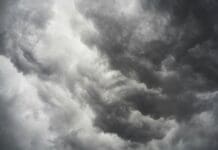This post is also available in:
 עברית (Hebrew)
עברית (Hebrew)
By ARIE EGOZI
The use of the definition Exclusive Economic Zone (EEZ) has become common in recent years. Countries understood that there are many threats on their maritime natural treasures and wanted to draw a line that will make it easier to protect these treasures.
In order to protect something that belongs to a country but is located a good distance from the shore, you need surveillance – a persistent one.
Maritime surveillance requirements, are demanding specific capabilities and performance such as mission endurance, flight profiles, mission equipment and human factors.
Until recently, such missions were performed exclusively by aircraft – some dedicated for the maritime surveillance mission, with others using off-the-shelf transport planes modified for the mission. These missions typically demand coverage of very wide areas, monitoring extensive maritime traffic, as well as deployment in unexpected conditions, in response to emergencies or on search and rescue missions. Therefore, the need for efficient development of a maritime situational picture is critical, enabling the deployment of the few available aerial assets to cover only those areas or targets of significance.
The introduction of unmanned air vehicles systems (UAV) is changing this paradigm, removing the limitations that have restricted manned missions, while introducing new capabilities that significantly enhance operational flexibility and efficiency of maritime control. This capability is specifically important in recent years, as countries are required to cover growing maritime areas claimed by the EEZ. These can be located up to 200 nautical miles from their coastline or farthest island. In the case of India, for example, such area covers a huge expanse of the Indian Ocean, bordering Indonesia in the east to Somalia in the west. A country cannot cover such vast space from its coastal radar stations, nor can it commit manned patrol flights to cover the entire area.
The Israeli UAV manufacturers have developed special payloads that are carried by long endurance platforms and gradually replace the manned platforms.


























